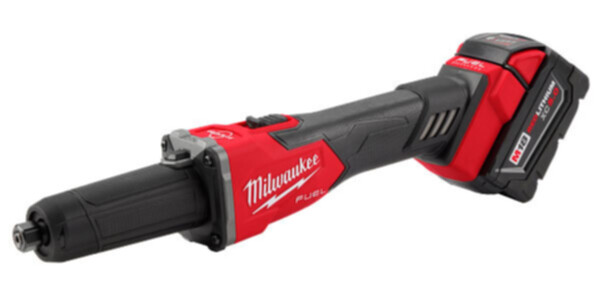The type of motor in a cordless drill is a brushed DC motor. These motors consist of carbon brushes, magnets, an armature, and a commutator.
The brushes and magnets are stationary, while the armature and commutator rotate on the motor shaft within the magnets. Cordless drill motors are based on one of the earliest motor designs, the brushed DC motor, which uses magnets and brushes to generate power.
These motors are commonly used in power tools due to their efficiency and versatility. Brushed DC motors are known for their ability to run on either AC or DC power sources.
Understanding The Motor In Cordless Drills
Understanding the motor in cordless drills is essential for anyone looking to purchase or use this versatile tool. Cordless drill motors are typically DC motors, which are powered by a battery source. These motors work by converting electrical energy into mechanical energy, which allows the drill to rotate and perform its function.
Inside a cordless drill, you’ll find several components that make up the motor. This includes the armature, which is a coil of wire that rotates within a magnetic field created by magnets. The commutator and brushes are also crucial parts of the motor, as they help to switch the direction of the electrical current and provide power to the armature. Additionally, there is the gearbox, which helps to control the speed and torque of the drill.
When it comes to determining whether a motor is brushed or brushless, it’s essential to understand their construction. Brushed motors have carbon brushes and a commutator, while brushless motors have a permanent magnet in the center that rotates around the coils. The choice between brushed and brushless motors depends on the specific needs and preferences of the user.
Overall, the motor of a cordless drill is a crucial component that allows it to function effectively. By understanding how these motors work and the different types available, users can make informed decisions when choosing the right cordless drill for their needs.

Credit: www.bodyshopbusiness.com
Brushed Vs. Brushless Motors: Which Type Is In Cordless Drills?
Brushed and brushless motors are the two main types found in cordless drills. Brushed motors use coils rotating around permanent magnets, while brushless motors have a permanent magnet that rotates around the coils.
| Brushed vs. Brushless Motors: Which Type is in Cordless Drills? | |
|
While both brushed and brushless motors are used in cordless drills, there are significant differences between the two. Differences Between Brushed and Brushless Motors: – Brushed motors have coils rotating around permanent magnets, while brushless motors have permanent magnets rotating around the coils. Pros and Cons of Brushed Motors in Cordless Drills: – Pros: Lower cost, simplicity in design and maintenance. – Cons: Less efficient, lower power output, shorter lifespan. Pros and Cons of Brushless Motors in Cordless Drills: – Pros: Higher efficiency, longer lifespan, more power output. – Cons: Higher cost, more complex design. |
Ac Vs. Dc Motors: What Powers Cordless Drills?
Cordless drills typically use DC motors, specifically brushed motors with a commutator. These motors have four basic parts: carbon brushes, magnets, an armature, and a commutator. The armature and commutator rotate together on the motor shaft, allowing the drill to operate efficiently and effectively.
In cordless drills, the type of motor used is typically a DC motor. DC motors are commonly found in small battery-powered power tools because they are more efficient and compact than AC motors. AC motors, on the other hand, are usually used in power tools that run off the AC powerline. However, some power tools may use universal motors, which can run on either AC or DC power. Universal motors have similarities with brushed DC motors, but they have the ability to operate with both AC and DC power sources. A traditional brushed DC motor consists of carbon brushes, magnets, an armature, and a commutator. In contrast, brushless DC motors have permanent magnets in the center that rotate around the coils. The choice of motor type depends on factors such as efficiency, power source availability, and the specific application of the cordless drill.Frequently Asked Questions Of What Type Of Motor Is In A Cordless Drill
How Do You Tell If A Motor Is Brushed Or Brushless?
To determine if a motor is brushed or brushless, observe the internal configuration. Brushed motors have rotating coils around permanent magnets, while brushless motors have rotating magnets around coils.
Do Cordless Drills Use Ac Or Dc?
Cordless drills use DC motors. These motors are usually brushed, with carbon brushes and a commutator. They are powered by small batteries, making them portable and convenient for various tasks. DC motors offer efficient power for cordless drills.
What Is A Drill Motor Made Of?
A drill motor is made up of four basic parts: carbon brushes, magnets, an armature, and a commutator. The brushes and magnets are stationary, while the armature and commutator rotate together on the motor shaft within the magnets.
What Is The Difference Between A Dc Motor And A Universal Motor?
A DC motor is designed to run on DC power only, while a universal motor can run on both AC and DC power. The main difference lies in the connections of the coils. However, the universal motor is less efficient compared to a DC or AC motor.
Conclusion
Cordless drills typically use either brushed DC motors or brushless DC motors. Brushed motors have carbon brushes, a ring of magnets, an armature, and a commutator. On the other hand, brushless motors have a permanent magnet in the center that rotates around the coils.
While the performance and efficiency of brushless motors are generally superior, brushed motors still have their advantages. Understanding the type of motor in your cordless drill can help you make an informed decision when purchasing or troubleshooting your tool.

